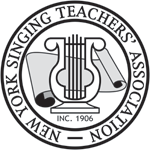History
The NYSTA is the oldest association of its type in the United States. A group of singing teachers incorporated it in the state of New York on 27 November 1906 as the National Association of Teachers of Singing. The first annual meeting of the new organization was held on 7 January 1908, at Steinway Hall in New York City. The English music critic and voice teacher Herman Klein (1856–1934) was the first chairman. Founding members included Enrico Caruso, Emma Eames, Geraldine Farrar, Mary Garden, Ernestine Schumann-Heink and Marcella Sembrich.
In 1917 the association changed its name to the New York Singing Teachers' Association (NYSTA). In 1924 Miss M. E. DeWitt reported that the NYSTA "has adopted Daniel Jones's English Pronouncing Dictionary," based on standard pronunciation in England at that time. H. L. Mencken commented that Jones himself had said, "Personally, I cannot think that any attempt to introduce this pronunciation into America is likely to meet with success." When Rudy Vallée rose to prominence in 1930s, the NYSTA said of his style of singing, "crooning corrupts the minds and ideals of the younger generation." In 1944 the NYSTA, the American Academy of Teachers of Singing and the Chicago Singing Teachers Guild founded the National Association of Teachers of Singing.
George Jellinek hosted a weekly syndicated radio feature in New York that played opera and classical music for many years from 1968. He described the NYSTA as "a very congenial and worthwhile group". The NYSTA made Jellinek guest speaker and interviewer at their annual meetings. At these events Jellinek interviewed such people as Grace Bumbry, Jerry Hadley, Judith Blegen, Simon Estes and Deborah Voigt.
This page is based on this
Wikipedia article Text is available under the
CC BY-SA 4.0 license; additional terms may apply.
Images, videos and audio are available under their respective licenses.
